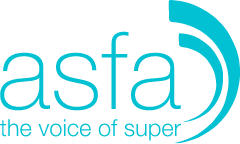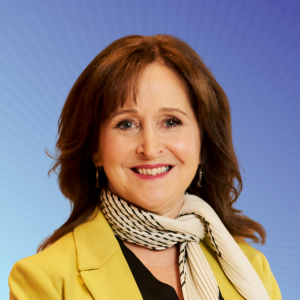6 March 2015
Growing retiree numbers highlight the importance of using retirement planning tools: ASFA Retirement Standard December Quarter
With the Intergenerational Report showing an increase in the number of retirees and predicting people will live longer in retirement than ever before, the Association of Superannuation Funds of Australia (ASFA) says it is important people use tools like the ASFA Retirement Standard to help plan how they will fund their retirement years.
While the December quarter showed a pause in the rising cost of living, fluctuations in the price of various items can have a different impact on retirees, compared to the rest of the population.
“This is because the items that make up a retiree’s budget at a ‘comfortable’ and/or ‘modest’ standard of living are different to what you might find in a younger person’s or a family’s budget,” says ASFA CEO Ms Pauline Vamos.
“With the number of retirees continuing to grow, it’s important policymakers take note of how retirees spend, so that they can better understand the impact that policy changes will have on this group of people.”
To help support an ageing population, ASFA has developed two separate retirement standards, one for younger retirees aged 65-85 and the other for older retirees aged 85 and above.
“With the Intergenerational Report forecasting that most of us will live very long lives, understanding how our spending needs change as we age is crucial to retirement planning,” says Ms Vamos.
“It also shows how important it is to accumulate as much superannuation and private savings as you can. Government finances will continue to be under pressure over the coming decades, and the best way to protect yourself against future policy changes is to start saving now for the retirement you want.”
Older couples wanting to live a comfortable retirement will need to spend $58,364 per year, up 0.1 per cent on the previous quarter. This requires a joint superannuation balance of around $510,000. Older singles seeking a comfortable retirement will now need to spend $42,604 a year, basically unchanged from the previous quarter, and this requires a super balance of around $430,000.
Modest price rises in a number of categories were largely offset by the significant fall (8 per cent) in the price of petrol in the December quarter.
Food costs rose by only 0.1 per cent in the quarter. While there were some price increases, such as for cakes and biscuits (+2.4 per cent) and restaurant meals (+0.7 per cent) these were partially offset by falls for fruit (-2.7 per cent) and vegetables (-1.7 per cent), which were due to an increased supply of summer fruits and salad vegetables.
Over the 12 months to the December quarter 2014, the food and non-alcoholic
beverages group rose 2.0 per cent. The main contributors to the rise were fruit (+7.3 per cent) and restaurant meals (+2.2 per cent). The rise was partially offset by a fall in bread (-3.3 per cent).
In relation to the cost of a modest standard of living, this also was largely unchanged in the December quarter, falling by $20 a year to $23,469, and expenditure for couples also falling by just $18 a year to $33,766.
Table 1: Budgets for various households and living standards for those aged around 65 (December quarter 2014, national)
| Modest lifestyle | Comfortable lifestyle | |||
|---|---|---|---|---|
| Single | Couple | Single | Couple | |
| Housing – ongoing only | $69.47 | $66.68 | $80.52 | $93.33 |
| Energy | $41.07 | $54.55 | $41.68 | $56.53 |
| Food | $77.13 | $159.76 | $110.18 | $198.32 |
| Clothing | $17.69 | $28.71 | $38.28 | $57.43 |
| Household goods and services | $26.70 | $36.21 | $75.12 | $88.00 |
| Health | $40.29 | $77.75 | $79.93 | $141.06 |
| Transport | $93.92 | $96.58 | $139.96 | $142.62 |
| Leisure | $74.51 | $111.00 | $225.79 | $309.42 |
| Communications | $9.32 | $16.32 | $25.62 | $32.60 |
| Total per week | $450.09 | $647.57 | $817.07 | $1,119.32 |
| Total per year | $23,469 | $33,766 | $42,604 | $58,364 |
The figures in each case assume that the retiree/s own their own home and relate to expenditure by the household. This can be greater than household income after income tax where there is a drawdown on capital over the period of retirement. Single calculations are based on female figures. All calculations are weekly, unless otherwise stated.
Table 2: Budgets for various households and living standards for those aged around 85, December quarter 2014, national)
| Modest lifestyle | Comfortable lifestyle | |||
|---|---|---|---|---|
| Single | Couple | Single | Couple | |
| Housing – ongoing only | $69.47 | $66.68 | $80.52 | $93.33 |
| Energy | $41.07 | $54.55 | $41.68 | $56.53 |
| Food | $77.13 | $159.76 | $110.18 | $198.32 |
| Clothing | $17.69 | $28.72 | $38.29 | $57.42 |
| Household goods and services | $46.88 | $66.46 | $145.74 | $168.69 |
| Health | $87.01 | $135.09 | $119.17 | $190.11 |
| Transport | $39.07 | $48.84 | $43.96 | $53.72 |
| Leisure | $47.47 | $70.82 | $122.70 | $169.60 |
| Communications | $9.27 | $16.22 | $25.47 | $32.41 |
| Total per week | $435.06 | $647.15 | $727.69 | $1,020.15 |
| Total per year | $22,685 | $33,744 | $37,944 | $53,194 |
The figures in each case assume that the retiree/s own their own home and relate to expenditure by the household. This can be greater than household income after income tax where there is a drawdown on capital over the period of retirement. Single calculations are based on female figures. All calculations are weekly, unless otherwise stated.
Super balances required to achieve a comfortable or modest lifestyle in retirement
In order to fund a comfortable lifestyle in retirement, a couple would need around $510,000 in superannuation and other income-producing assets. This estimate is based on the assumption that both members of the couple do not retire before qualifying for the Age Pension. Over the retirement period, the couple will receive at least a part Age Pension, which may increase to be the full Age Pension as they draw down on their superannuation savings.
For a single person, the amount of superannuation and other savings needed to support a comfortable lifestyle in retirement is around $430,000. Again, this assumes receipt of at least a part Age Pension for most of their retirement period, with the Age Pension component increasing as superannuation savings are drawn down.
To achieve a modest lifestyle in retirement, only very modest superannuation savings are needed if retirement starts at Age Pension eligibility age. For a couple, the lump sum amount of required savings is $35,000 and for a single person it is $50,000. The reason that the required retirement savings amounts are relatively low is that, after recent increases, the Age Pension is not far short of the budgets required for a modest standard of living in retirement.
More information
Costs and summary figures can be accessed via the ASFA website. The ASFA Retirement Standard Calculator can be used to obtain a breakdown of the Retirement Standard budgets for each state. Australians can find out more about superannuation on the independent Super Guru website.
About the ASFA Retirement Standard
The ASFA Retirement Standard is an initiative by the Association of Superannuation Funds of Australia (ASFA), benchmarking the annual budget needed by Australians to fund either a ‘comfortable’ or ‘modest’ standard of living in people’s post-work years.
It is updated quarterly to reflect inflation and provides detailed budgets of what singles and couples would need to spend to support their chosen lifestyle.
Modest lifestyle in retirement
Better than the Age Pension, but people are still only able to afford fairly basic activities.
Comfortable retirement lifestyle
Enabling an older, healthy retiree to be involved in a broad range of leisure and recreational activities, and to have a good standard of living through the purchase of such things as: household goods, private health insurance, a reasonable car, good clothes, a range of electronic equipment, and domestic and occasional international holiday travel.
For further information, please contact:
Lisa Chikarovski: Manager – Consumer Strategy, Media and Public Affairs, 0451 949 300.
About ASFA
ASFA is the peak policy, research and advocacy body for Australia’s superannuation industry. It is a not-for-profit, sector-neutral, and non-party political national organisation, which aims to advance effective retirement outcomes for members of funds through research, advocacy and the development of policy and industry best practice.
































